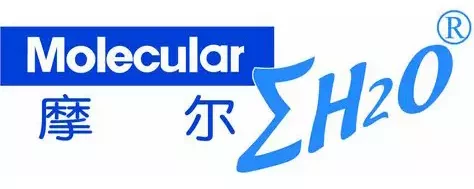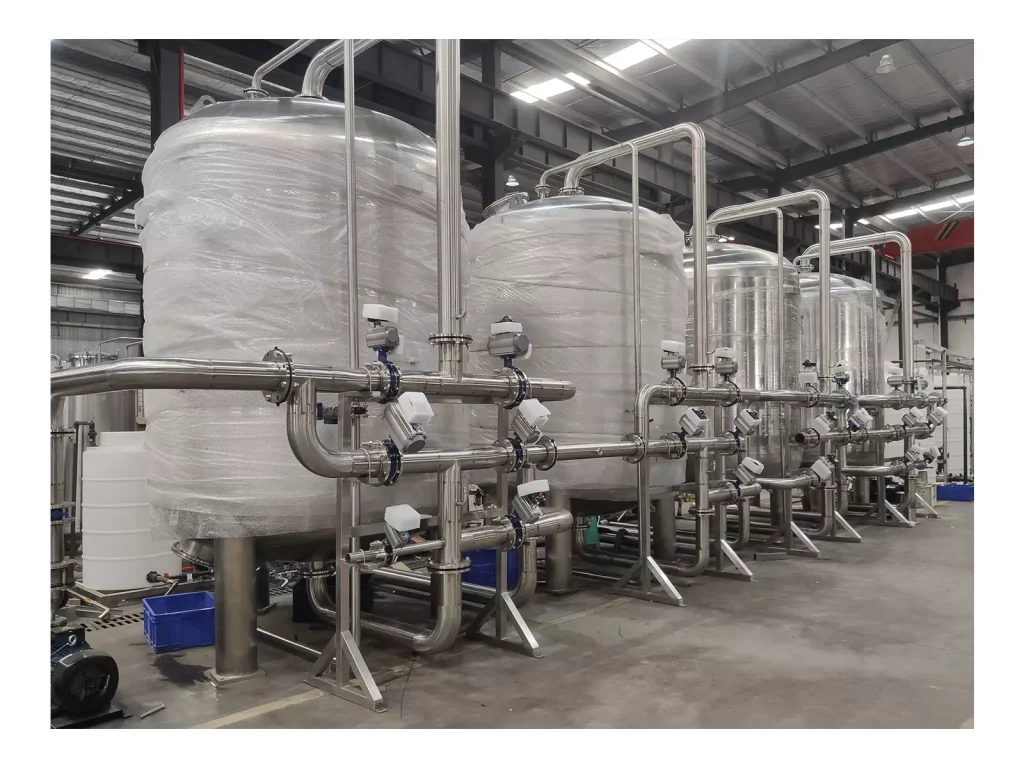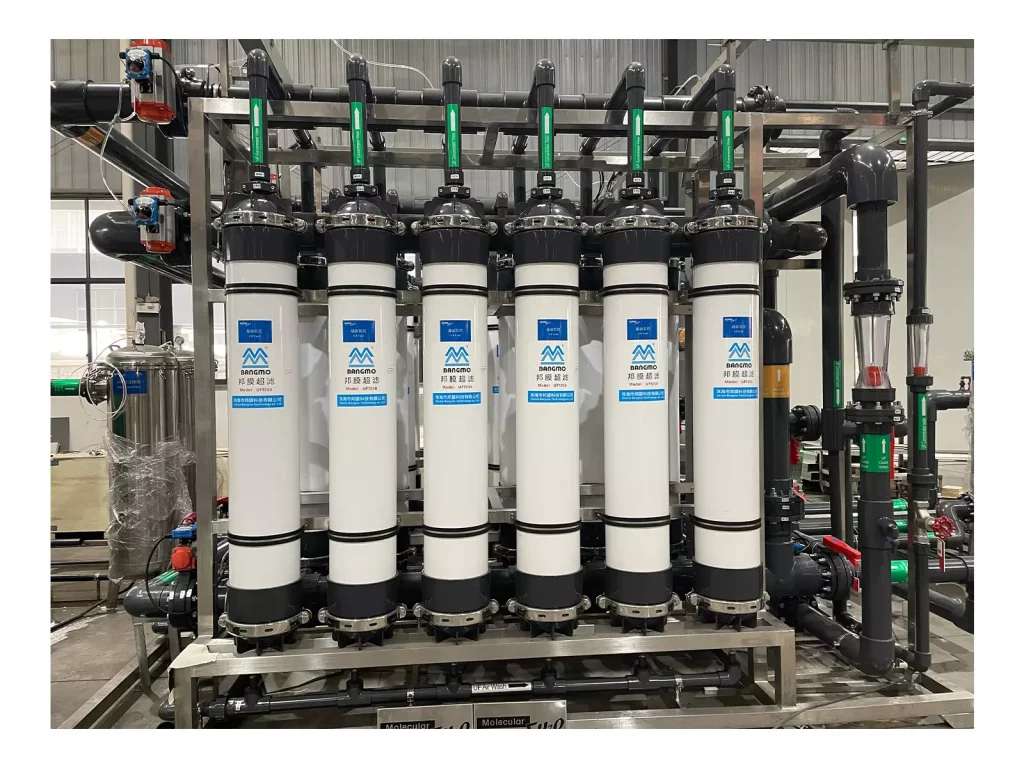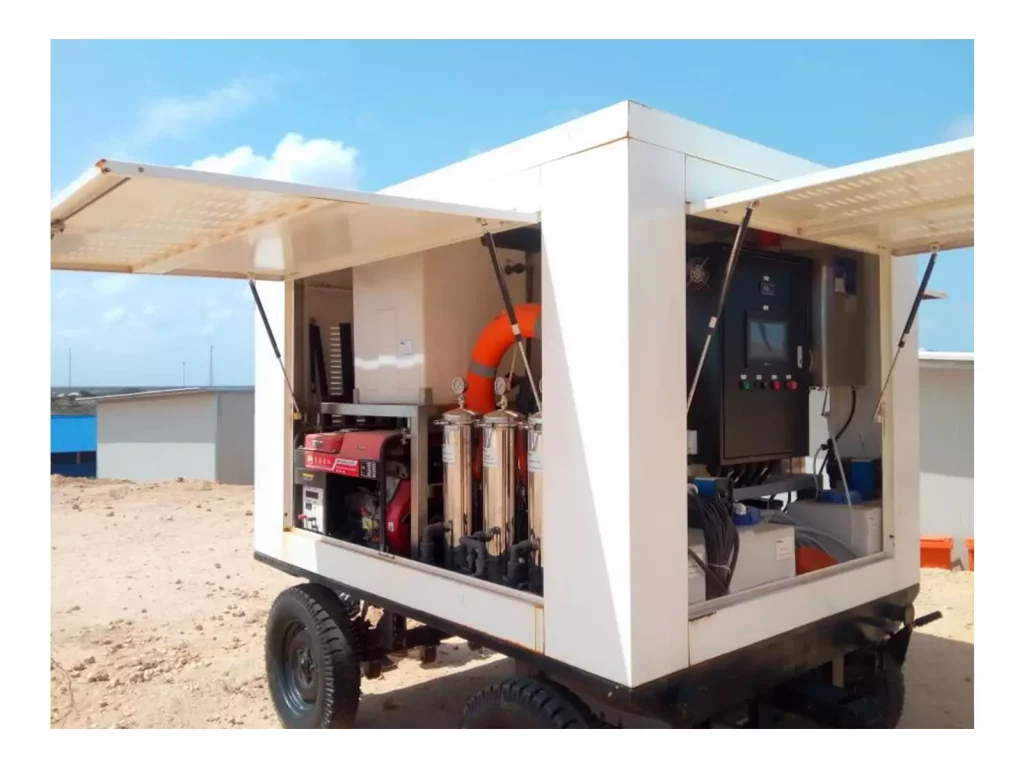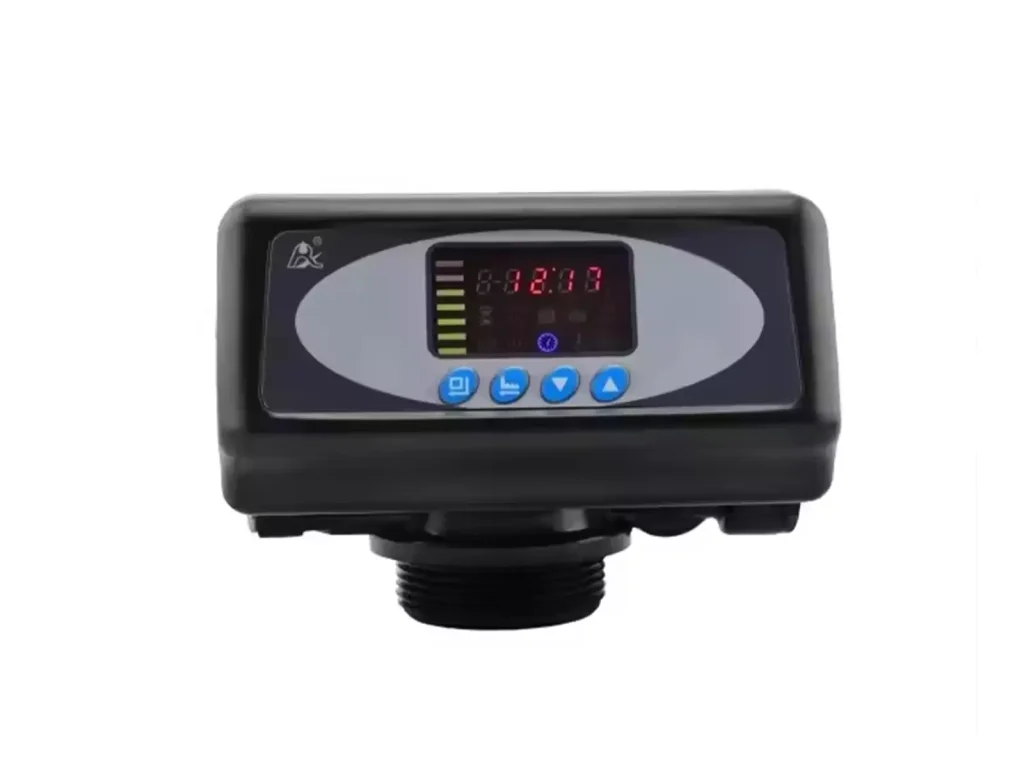Ultrapure water systems form the foundation of crucial industries, from production of pharmaceuticals (where USP standards demand <=0.1 EU/mL of endotoxins) to semiconductor manufacturing (requiring 18.2 MΩ·cm resistance). These systems aren’t only used to produce water; they also ensure the integrity of products, process reliability as well as legal compliance.
However, the reality is, that the most sophisticated Ultrapure water system will degrade with time if not properly maintained. Systems that are not properly maintained can be affected by membrane fouling, bacterial contamination or a fluctuating resistance, which can lead into expensive breakdowns, batch failures or non-compliance with the standards.
This article provides the steps you can take to maintain your system’s performance, prolong its life, and ensure your ultra-pure water always in good condition.
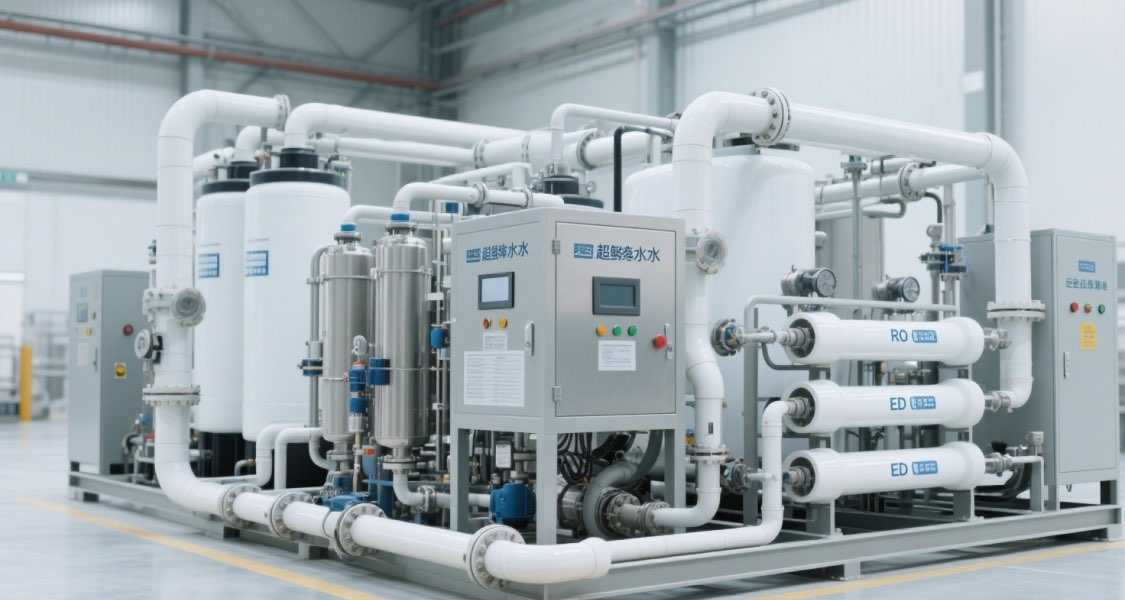
Pre-Maintenance Preparation
Before you start working on maintenance, prepare the groundwork to avoid any mistakes or dangers.
Make safety a priority when planning to perform Ultrapure Water System maintenance. Shut down the entire system, and then remove it from main supply in order to prevent accidental activation. Wear the proper PPE Nitrile gloves to protect yourself from exposure to chemicals, safety goggles to shield against splashes and lab coats, especially when handling cleaning products or examining wet parts.
Get the the tools and other supplies you require in advance. The manual from the manufacturer is crucial for specific steps to the model, such as EDI voltage setting. Utilize OEM-recommended cleaning products citric acid to remove organic scales, and alkaline cleaning agents to remove organic fouling and EDI-specific detergents. Keep spare parts such as O-rings and sediment filters on the shelf, and use OEM components. Include monitoring equipment such as conductivity meters that are calibrated pressure gauge, pressure gauges, as well as a flashlight.
Routine Maintenance Tasks (Daily/Weekly)
A regular routine of light maintenance helps prevent minor issues from becoming major problems.
Daily Monitoring of Key Performance Indicators
Daily monitoring is vital for Ultrapure water system stability. Check resistivity/conductivity daily—most industrial systems need ≥18 MΩ·cm; a sudden drop (e.g., to 15 MΩ·cm) may signal leaks, fouled resin, or failing EDI modules. Track pressure differentials across RO membranes and EDI modules: a 10–15 psi RO spike indicates fouling, while EDI pressure drops suggest resin degradation. Log flow rates daily; a ≥10% decrease may mean clogged pre-filters or restricted valves, requiring prompt attention.
Weekly Visual Inspections
Every week, checks ensure the integrity of the system. Check for leaks in the pipe joints, RO housings, and EDI manifolds. Even small drips could cause the loss of pressure or contamination. Examine pre-filters: sediment filter that have a gray/brown discoloration indicate dirt accumulation; examine carbon filters for chlorine leakage (chlorine can damage RO membranes). Verify that alarms (high TDS, low flow and over-pressure) function, by testing them every month by the simulation of failures (e.g. blockage of flows sensors) to ensure that shutdowns are not occurring and protect the ultrapure purification system.
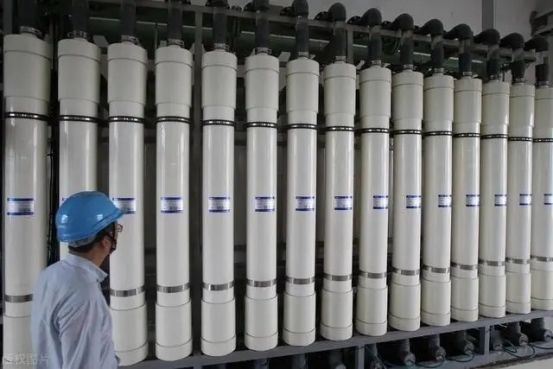
Periodic Maintenance (Monthly/Quarterly)
A regular maintenance schedule every 30 to 90 days helps keep core components running at maximum efficiency.
Care for Pre-Treatment Systems
Sediment filtering systems need replacement every three months (or at a pressure of 10 psi drop) to catch sand and other debris, thus preventing the RO membrane from fouling up prematurely. Carbon filters are replaced every 2 to 4 months (monthly for water with high chlorine) to eliminate organics and chlorine. If you are using water softeners, renew resin every month using salt. Testing the hardness of the post-softener–over 1 grain/gallon, regeneration is required.
RO Membrane Maintenance
Maintenance of RO membranes is a regular cleaning and sanitization to ensure high-performance Ultrapure Water System. Cleanse membranes every 3 months (or at 15 percent pressure or flow drop) with 1 -2% citric acid to remove inorganic scale and alkaline cleaning agents to eliminate organic fouling. The cleaner should be circulated at 2 to 3 GPM per membrane for 30-60 minutes, and then flush using the UPW. Cleanse every three months with 0.1 percent hydrogen peroxide using a bypass technique to avoid EDI/polishing steps in order to shield resins in your purification process.
| Contaminant Type | Cleaning Agent | Concentration | Circulation Rate | Circulation Time |
| Inorganic scale | Citric acid | 1–2% solution | 2–3 gpm per membrane | 30–60 mins |
| Organic fouling | Alkaline cleaners | As OEM recommended | 2–3 gpm per membrane | 30–60 mins |
EDI Module Maintenance
Maintenance of EDI modules and polishing system maintenance post-treatment is essential to the purity of Ultrapure’s water system. Clean EDI modules every 3 to 6 months with specific cleaners for EDI to eliminate resin fouling. Avoid harsh acids that can degrade membranes that exchange ions. Check the electrodes regularly for white or green scale, then clean them with soft brushes and citric acid at 5 and make sure EDI operates at the voltage recommended by the manufacturer (50-200V)–spikes could indicate exhaustion of resin.
Post-treatment systems should change the UV lamp every 6 to 12 months (intensity diminishes even if it’s they are glowing) and wash back UF membranes on a monthly basis. Change UF membranes every 2 to 3 years if the flow is’t recovering. This will ensure that components function as well as ensuring the ultrapure purification system’s durability.
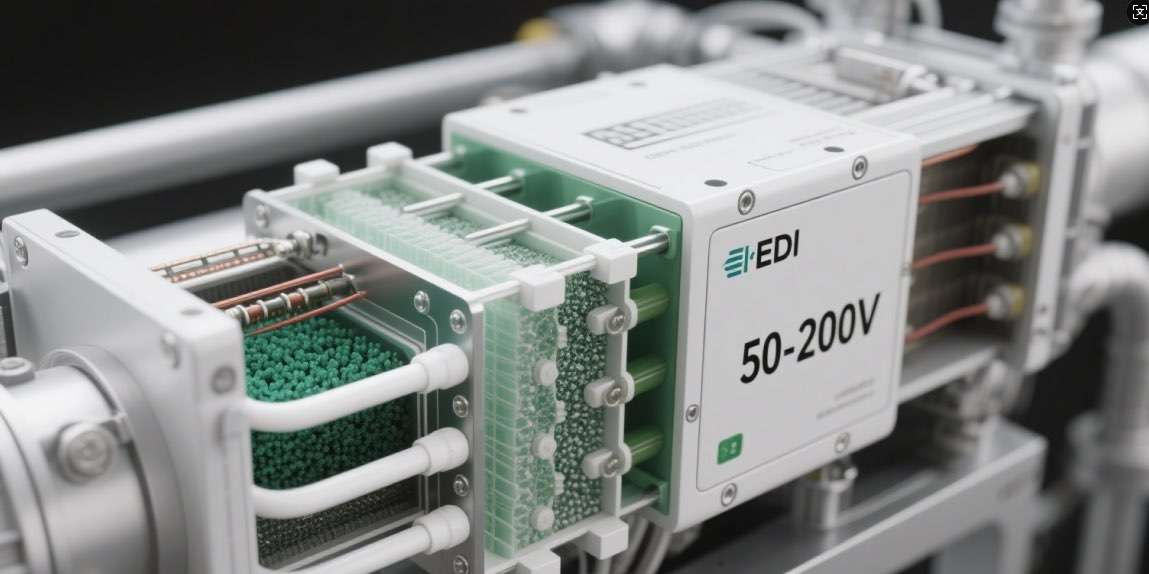
Long-Term Maintenance (Annual)
A deep dive every year ensures that the system is in good condition and stays in the system’s compliance.
Comprehensive System Audits
Audits of the system in depth are an essential component of regular maintenance for your Ultrapure Water System, which ensures the accuracy, structural integrity, and hygiene-friendly flow. Sensors should be calibrated frequently Conductivity probes should be sent along with TDS meters, as well as pressure gauges to a reputable lab to do this because inaccurate readings may obscure the real issues in the ultrapure purification system. Structured components also require meticulous examination.
Check stainless steel tanks valves and pipes for rust which is a common occurrence in humid environments. You can treat affected areas with food-grade epoxy when needed. Also, look over flow pathways to find “dead legs”–unused pipes that are longer than six times their length – where bacteria are able to thrive. This is which is especially important for pharmaceutical systems in order to ensure the highest purity standards.
Scheduled Component Replacements
Regularly scheduled replacement of components is essential to ensure long-term reliability of the system. RO membranes need to be replaced every 2 to 5 years, with an prior replacement being recommended in cases where feed water quality is not good, such as high turbidity which can accelerate the degradation of membranes. When properly maintained, generally last between 5 and 10 years. The most important indicators of failure are consistent decreases in resistance or an increase in power consumption. O-rings and gaskets must be replaced every year. replacement to prevent leaks since aging rubber tends to get harder and crack with time, weakening the integrity of the system.
| Component Type | Typical Replacement Cycle | Failure Indicators | Triggers for Early Replacement |
| RO membranes | 2–5 years | Sustained drop in resistivity, sudden flow reduction | Poor feed water quality , frequent fouling |
| EDI modules | 5–10 years | Voltage spikes, unstable resistivity | Resin poisoning, membrane damage |
| O-rings/gaskets | 1 year | Leaks, hardened/cracked rubber | – |
Compliance Documentation
Record every maintenance job and record dates reads, dates, and even the items substituted. This record is crucial to audits and troubleshooting any issues that might arise in the future.
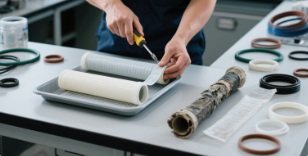
Final Words
The maintenance of an ultrapure water system isn’t about fixing things that break–it’s about keeping the purity of the water, its reliability, and the compliance which your operations rely on. Following this guide’s regular monthly, regular, and annual steps, you’ll reduce the amount of downtime, cut costs and ensure that your UPW is in compliance with the strict requirements of your business.
For a personalized recommendation, whether improving maintenance in a laboratory system or an industrial facility, reach out to our technical staff. Molewater are here to help ensure that your water is flowing in a smooth manner.
